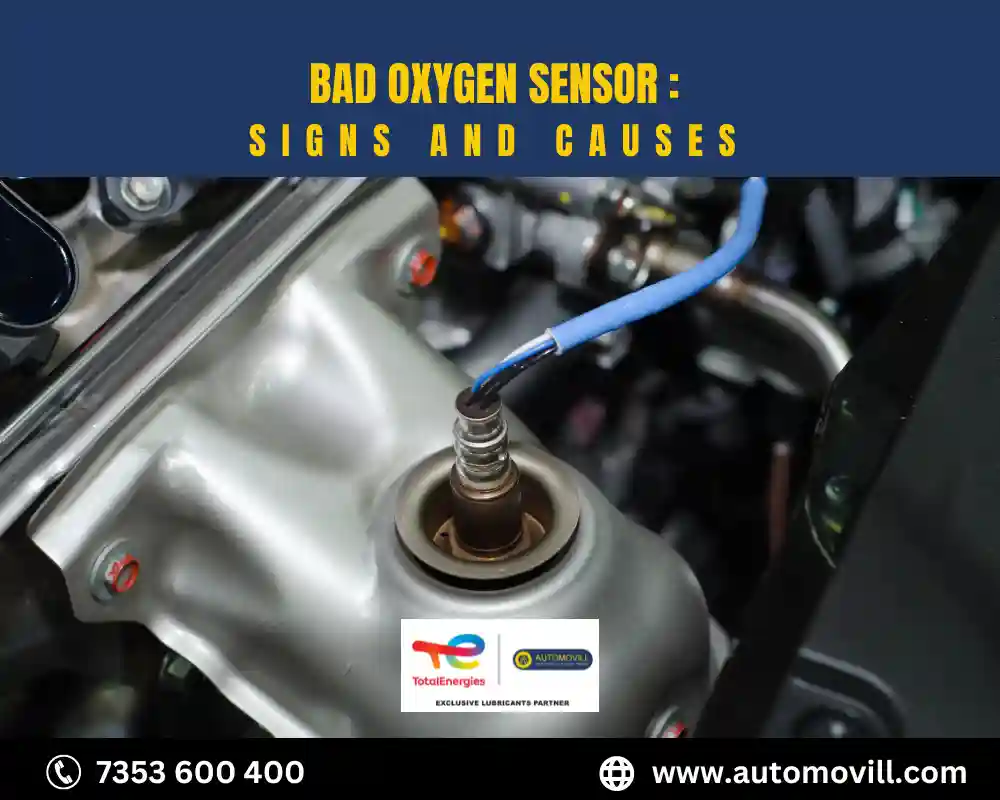
If you’re driving down the road, and suddenly your car’s performance isn’t quite what it used to be. Your fuel efficiency seems off, and there’s a nagging feeling that something might be wrong.
Well, one of the culprits could be a malfunctioning oxygen sensor. These small yet crucial components play a significant role in your vehicle’s performance.
In this blog, we’ll discuss the signs of a bad oxygen sensor and answer some common questions about it.
What Do Oxygen Sensors Do?
Oxygen sensors are responsible for monitoring the level of oxygen in your exhaust gases.
This information helps your car’s engine control module (ECM) regulate the air-fuel mixture, ensuring optimal combustion. In simple terms, oxygen sensors help your car run efficiently while minimizing harmful emissions.
Signs of a Bad Oxygen Sensor
Here we go:
1. Poor Fuel Efficiency
If you find yourself filling up the gas tank more often than usual, a faulty oxygen sensor might be to blame. It can lead to an incorrect air-fuel mixture, causing your car to burn more fuel.
2. Check Engine Light
The illuminated check engine light on your dashboard could indicate various issues, including a malfunctioning oxygen sensor. Don’t ignore this warning; have your vehicle’s diagnostics checked.
3. Rough Idling or Stalling
A bad oxygen sensor can cause your engine to idle roughly or even stall when you’re at a stop. This is due to the improper air-fuel mixture affecting engine performance.
4. Difficulty Accelerating
If your car struggles to accelerate smoothly, it might be due to a malfunctioning oxygen sensor disrupting the engine’s performance.
5. Increased Emissions
Failed oxygen sensors can lead to higher emissions. If your vehicle fails an emissions test or you notice excessive tailpipe smoke, it could be a sign of a problem.
6. Unusual Exhaust Odor
A malfunctioning oxygen sensor can result in an irregular air-fuel mixture, leading to an odd odor coming from your exhaust.
7. Sudden Drop in Gas Mileage
If your car’s fuel efficiency takes a sudden dip, you must inspect the health of your oxygen sensors or seek some mechanic assistance as they play a key role in optimizing fuel usage.
8. Sensor Codes in Diagnostics
Modern vehicles have onboard diagnostics systems that can pinpoint specific issues. If you receive an error code related to the oxygen sensor (such as P0130 or P0135), it’s a clear sign that there’s a problem.
What Causes an Oxygen Sensor to Fail?
Oxygen sensors are exposed to extreme heat and gases, which can lead to their gradual deterioration over time. Common factors that can cause oxygen sensors to fail include:
- Age: Like any component, oxygen sensors have a finite lifespan.
- Contaminants: Oil and coolant leaks can contaminate the sensor and impact its performance.
- Excessive Fuel Additives: Overuse of certain fuel additives might damage the sensor.
- Soot and Carbon Buildup: These can accumulate on the sensor’s surface, affecting its accuracy.
Do You Have to Replace All O2 Sensors at the Same Time?
No, you don’t necessarily need to replace all oxygen sensors simultaneously. Modern vehicles have multiple oxygen sensors, typically one or two upstream (before the catalytic converter) and one downstream (after the catalytic converter).
If a sensor fails, you can replace the specific faulty one. However, if one sensor fails, it’s worth considering the age of the others, as they might also be nearing the end of their lifespan.
What Happens When an Oxygen Sensor Goes Bad?
When an oxygen sensor goes bad, several issues can arise:
- Decreased Fuel Efficiency: Your car’s fuel economy might suffer.
- Increased Emissions: A malfunctioning sensor can lead to higher emissions.
- Poor Performance: Engine misfires and rough idling are possible.
- Check Engine Light: This dashboard warning light might illuminate.
- Catalytic Converter Damage: A faulty sensor can damage the catalytic converter over time.
How Long Do O2 Sensors Last?
The lifespan of an oxygen sensor varies, but on average, it lasts around 50,000 to 100,000 miles (80,000 to 160,000 kilometers). However, some sensors might deteriorate sooner due to driving conditions and other factors. Regular maintenance and addressing issues promptly can help prolong their lifespan.
Is Oxygen Sensor Repairable?
Oxygen sensors are generally not repairable. Once they fail or show signs of malfunction, replacement is the best course of action. Attempting to repair a sensor can often result in more problems down the road.
In conclusion, paying attention to the signs of a bad oxygen sensor can save you from decreased fuel efficiency, increased emissions, and potential damage to other components.
If you notice symptoms like poor performance or a lit check engine light, it’s a good idea to have your oxygen sensors inspected.
Regular maintenance and prompt replacements when needed will keep your car running smoothly and environmentally friendly.
For any automotive issue, schedule a call with us.
